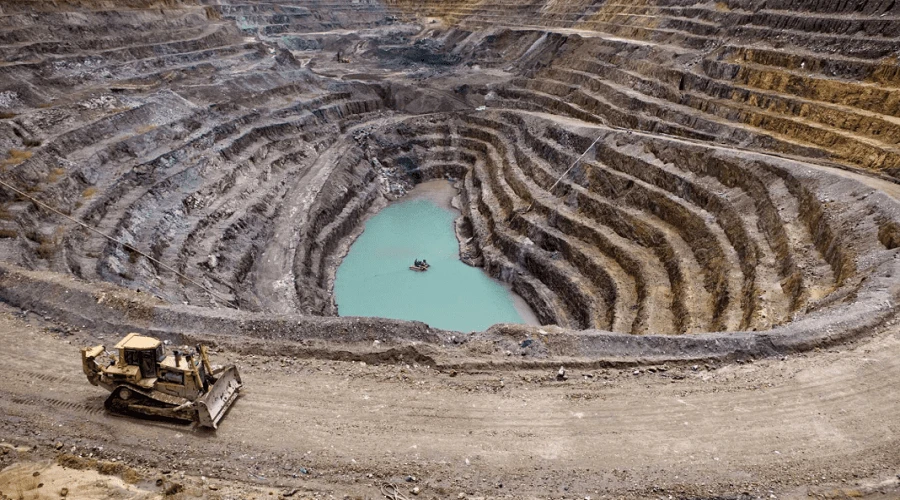Europe could become less reliant on China for lithium-ion battery production by 2027, according to projections by Transport & Environment (T&E).
In this process, investments to manufacture batteries locally are beginning to reach 27 European countries.
Spain is not excluded from this process.
Volkswagen, Envision and Inobat are some of the confirmed companies to establish their gigafactories in the national territory, which opens the doors for mining companies to exploit lithium here as well.

Currently, Europe heavily relies on imports: this mineral is considered one of the critical materials. And Spain holds significant reserves of it.
However, this won’t be an easy task, as warned by José Antonio Ezquerra, a Lawyer, Manager of Euskal Árido, and a specialist in mining sector regulations.
“The administrative authorizations and concessions required take too long to process; we’re talking about average periods of over seven years, which in many cases extend beyond ten years. This poses a significant barrier to project development,” said.
“Spanish Administrative Law is highly protective. Additionally, Autonomous Communities can develop state’s basic regulations, imposing further restrictions,” he added.
The legislation governing this activity is extensive.
The first mention goes to the Law 22/1973 of July 21, on Mines, which boasts legal and technical excellence, “difficult to surpass and marking 50 years in effect.”
This law has been updated and aligned with the evolution of society and mining activities in Spain.
Various attempts to introduce a new Mining Law have been made, but none have garnered sufficient consensus or improved the existing one.
Similarly, within the environmental domain, the Law 21/2013 on environmental assessment comes into play, along with its developments through laws issued by different Autonomous Communities.
There is specific legislation regarding Environmental Responsibility and the Rehabilitation of areas affected by mining activities:
- Royal Decree 777/2012, of May 4, which modifies Royal Decree 975/2009, of June 12, on the management of waste from extractive industries and the protection and rehabilitation of areas affected by mining activities.
- Law 26/2007, of October 23, on Environmental Responsibility.
These laws establish the imposition of financial guarantees concerning environmental matters and the rehabilitation of areas impacted by mining activities.
At the local level, there is legislation regarding Water and Hydraulic Public Domain.
- Legislative Royal Decree 1/2001, of July 20, approving the consolidated text of the Water Law.
- Regulation of the Hydraulic Public Domain, which develops the preliminary, I, IV, V, VI, VII, and VIII titles of the consolidated text of the Water Law, approved by Legislative Royal Decree 1/2001, of July 20.
- Legislation on contaminated soils, atmospheric emissions, and discharges.
- Law 7/2022, of April 8, on waste and contaminated soils for a circular economy.
- Law 34/2007, of November 15, on air quality and atmospheric protection.
From the perspective of Ezquerra, “all these regulations should be articulated in an agile and integrated manner, so they do not become new sources of delays in processing mining procedures, which often take decades to process.”
“The limitation of maximum processing times for procedures has not been effective, nor has it achieved the goal of reducing timelines and streamlining administrative procedures,” he added.
A reality currently affecting the mining sector is that the requirement for reports from other administrative bodies, which result in the suspension of the legal maximum period for resolving a procedure, leads to procedures extending for years.
Additionally, this generates significant legal uncertainty for promoters who may be forced to abandon strategically important mining projects for the country.
“An effective application of the principle of expediency outlined in Law 39/2015, of October 1, on the Common Administrative Procedure of Public Administrations, is essential,” the specialist commented.
To achieve this, it’s crucial to provide material and human resources, particularly reinforcing digital tools to encourage “swift, active, and transparent” participation.
From their perspective, instruments can be established that serve as a guarantee that anyone who doesn’t meet requirements will have to assume substantial financial amounts, in addition to economic and penal sanctions that may result.
Cáceres and Cañaveral at the Center of National Lithium Strategy
Cañaveral and Cáceres are the two mines found in Europe that possess the most lithium on the continent.
However, neither of them is yet ready to be authorized for commencing mineral extraction.
Currently, they are in the process of obtaining permits.
The Cañaveral site is situated in a less densely populated area with fewer complex land-use issues, whereas the Cáceres site is somewhat more controversial, requiring a thorough examination of its extraction.
“The timing is complex due to ongoing municipal and regional elections; it could be contentious, and certain political groups might use it as a point of contention against their political rivals,” said César Luaces Frades, Director General of the Spanish Confederation of Mineral Raw Material Industries (PRIMIGEA).
Luaces believes that lithium extraction could be feasible within a span of four years.
Though it might seem like a considerable duration, the authorization process for a mine can take up to ten years, with an additional two years for facility construction.
A regulation presented by the European Commission to the European Parliament on March 16th of this year could potentially trim this timeline to 12 to 24 months.
In this manner, the mines could, if all goes well, be operational by 2027.
“For now, they are still in the process of obtaining permits and have been under review. They haven’t received the green light yet, but it appears that one or more of them are nearing approval,” Luaces remarked.
Economic Possibilities Offered by Lithium
The specific figures representing the lithium mines in Extremadura are not known, but PRIMIGEA has provided several significant numbers for Spain.
It is estimated that in Cañaveral alone, it could produce 30,000 tons of lithium sulfate for electric car battery production and an extraction of 1.2 million tons of lithium.
The extraction requires an investment of 340 million euros and could create 430 direct jobs, in addition to indirect employment.
“At PRIMIGEA, we estimate that 15% of the business volume comes from extraction, with the remaining portion coming from the value chain. Without that mine, there is no value chain, and wealth is not generated,” Luaces stated.
Read more: Electric buses in exchange for Latin American lithium: the agreement planned by the EU








